Archive | Industry and trade RSS feed for this section
Industry and trade
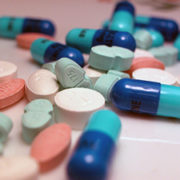 Industry and trade, Infrastructure
Industry and trade, Infrastructure
 Industry and trade
Industry and trade
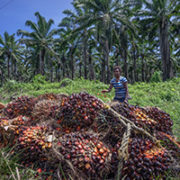 Industry and trade
Industry and trade
 Industry and trade
Industry and trade
 Industry and trade
Industry and trade
 Industry and trade
Industry and trade
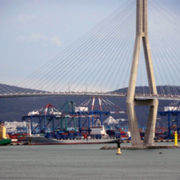 Finance sector development, Industry and trade
Finance sector development, Industry and trade
 Industry and trade, Regional cooperation and integration
Industry and trade, Regional cooperation and integration
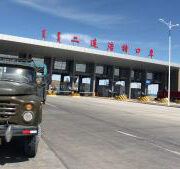 Industry and trade
Industry and trade
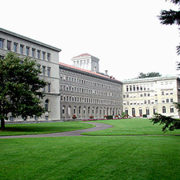
How trade can promote SDG goal 3: Duty-free market access for health products

Trade in health products has increased substantially over the past 2decades, and tariffs on health products have been lowered, making, for example, medicines more affordable for many.Indeed, Sustainable Development Goal (SDG) 3 calls upon countries to ensure healthy lives and to promote well-being for all ages. Yet in several developing countries, substantial tariffs still persist, inflating the prices of health products. The most direct and immediate contribution of the trade community toward achieving SDG 3 couldbe to open up trade unilaterally or to negotiate a plurilateral trade agreement, which would guarantee free market access for health products, like much-needed medicines.
Why poor countries should invest first in national trade infrastructure

Low-income countries are often advised to prioritize investment in their trade infrastructure to better connect to international markets, and garner the benefits of a more open trade regime. The World Bank’s Trade Facilitation Support Program and the World Trade Organization (WTO)’s Trade Facilitation Agreement, for example, promote investment in trade infrastructure to boost development prospects by improving competitiveness and lowering trade costs.
The impact of trade on employment in the Sustainable Development Goals

Employment was an afterthought in the Millennium Development Goals (MDGs). It was not part of the original goals but was added in 2008, halfway through the implementation period. It is, however, a key element of the Sustainable Development Goals (SDGs). Goal 8 encourages countries to “promote sustained, inclusive and sustainable economic growth, full and productive employment and decent work for all.” There are eight employment-related targets and ten specific indicators (United Nations 2015).
Trading for sustainable fisheries

What fish trade policy options and recommendations can be put in place to help achieve the relevant Sustainable Development Goals (SDGs) of the United Nations? We need to understand the (i) relationship between fish trade and sustainable fisheries; (ii) potential promise of and the perils in the fish trade; and (iii) main trade-related concerns in the sustainability of fisheries. Sumaila (2017) addresses these issues in detail.
Still time to reconnect trade policy and SDGs

In 2002, “trade for development” was a core topic of the Millennium Development Goals. Fifteen years later, trade is at the periphery of the Sustainable Development Goals (SDGs). Three main reasons explain this rapid decline. First, trade negotiators did their best to obscure the Doha Round and bilateral trade negotiations in byzantine and sterile debates. Second, business stopped to pay attention to trade policy because firms turned to a form of liberalization tailor-made for their own global value chains: they traded tariff cuts of interest to them in exchange of investments in the opening countries.
Exploring the trade–urbanization nexus in developing economies: evidence and implications

Modern humans have been increasingly concentrated in cities. The United Nations forecasts that 60% of the world’s population will live in urban areas by 2030. Regional multilateral institutions such as the Development Bank of Latin America and the Asian Development Bank have stepped up their efforts to support the urban sector and to collaborate on comparative studies of urbanization.
What can we learn from the trade and growth nexus in the Republic of Korea?

Since trade started being emphasized as a locomotive of growth, export promotion trade policies have become a popular option for countries in search of higher economic growth rates. East Asian countries in particular have witnessed a distinct success in terms of rapid economic growth after the adoption of outward-looking trade policies.
Digitizing trade – how changing the process is changing development

Over 31 million consumers in Viet Nam researched or purchased a product online in 2015. Just ten years ago, internet connectivity was only starting to become common. Digitization is changing how people trade. There are even more dramatic changes happening under the hood. The way trade is financed, processed and regulated has entered a period of disruption. We take this opportunity to consider the short and long term implications of digitization of the trade process. They’re not what you’d expect.
TPP and RCEP – friends not foes

Talks just concluded in Auckland, New Zealand on Saturday show that plans for the Regional Comprehensive Economic Partnership (RCEP) are advancing. Just as both Hillary Clinton and Donald Trump, the next potential leaders of the Trans-Pacific Partnership’s (TPP) biggest partner—the US—have distanced themselves from the agreement. Some even suggest that the US Congress won’t ratify the TPP agreement, and warn that the world economy risks US isolationism.
US tips WTO into deep waters

A U.S. decision to block the reappointment of Seung Wha Chang, a South Korean member of the appellate body of the World Trade Organization, has put at risk the independence and credibility of the WTO's dispute settlement mechanism -- the crown jewels of the multilateral trading system. After the de facto collapse of the Doha round of talks on further trade liberalization the U.S. move is a serious blow for the WTO.


Search
Subscribe / Connect to Asia Pathways
Subjects
- Agriculture and natural resources
- Blog
- Capacity development
- Climate change
- Economics
- Education
- Energy
- Environment
- Finance sector development
- Gender
- Governance and public sector management
- Health
- Industry and trade
- Information and Communications Technology
- Infrastructure
- Miscellaneous
- Population
- Poverty
- Private sector development
- Regional cooperation and integration
- Sanitation
- Social development and protection
- Transport
- Uncategorized
- Urban development
- Video Blog
- Water
Recent Posts
- Navigating Linear Transport Infrastructure Through Conservation Landscapes
- How Are Technology Trends Shaping the Future of Insurance?
- Securing Asia’s Future Through Soil Health: Why It Matters and What Must Be Done
- Silent Struggles: Advancing Women’s Mobility with Public Transportation in Asia
- Mind Your Neighbors: Measuring Shrimp Farm Spillovers




Recent Comments